 October 31, 2019 John E. Ross, KD8IDJ, Editor
| ||||||
World Radiocommunication Conference 2019 Opens in Egypt World Radiocommunication Conference 2019 (WRC-19) is under way in Sharm el-Sheikh, Egypt. More than 3,500 delegates from 193 member-states around the world are attending the month-long gathering, sponsored by the International Telecommunication Union (ITU), which opened on Monday, October 28. WRC-19 delegates will discuss changes to the ITU Radio Regulations. Amateur radio issues "WRC-19 [is] to manage scarce radio-frequency spectrum for rapidly evolving terrestrial and space-based communication technologies," ITU said in a news release, describing WRC-19 as an "international treaty-making conference governing the global management of scarce radio-frequency spectrum as well as geostationary-satellite and non-geostationary-satellite orbits." UN Secretary-General António Guterres addressed WRC-19 by video. The International Amateur Radio Union (IARU) and its member-societies are representing the Amateur and Amateur Satellite Services with a team of 14 people from 10 countries. Agenda Items of particular interest to IARU are:
"This meeting is the culmination of 4 years' work by IARU in ITU and regional telecommunications organizations to protect and enhance Amateur Service frequency allocations," IARU said. At WRC-19 this week, the official document on IARU WRC-19 positions on various current agenda items and views on future proposals that may impact the Amateur Service was released. Also released was the detailed 50 MHz study report that provides the basis for the consideration of Agenda Item 1.1. In addition to classical narrow-band analog usage, the study considers wider-bandwidth digital systems.
"Last week, the RA met to approve standards developed during the 2015 - 2019 cycle of work in the ITU Radiocommunication Sector and to begin planning the work for the next 4 years," Sumner said in a post to the ARRL IARU Group. Sumner said Brazilian delegation member Flavio Archangelo, PY2ZX, with the support of several other administrations, pressed for greater attention to the growing problem of radio noise. "There is tight security around the conference center and the official hotels," Sumner reported. Congressional Champion of Amateur Radio Greg Walden, W7EQI, Announces Retirement One of amateur radio's strongest supporters in the US House of Representatives, Oregon Republican Greg Walden, W7EQI -- the top Republican on the powerful House Energy and Commerce Committee -- said this week that he will not seek another term in 2020. Walden, 62, who will have served for 22 years in the US House at the end of his current term, championed the Amateur Radio Parity Act as the chair of the Subcommittee on Communications and Technology. He went on to "I will close the public service chapter of my life, thankful for the friends I've made and the successful work we've done together," Walden said in a statement. In 2014, the ARRL Board of Directors voted to confer the first Barry Goldwater, K7UGA, Achievement Award "in recognition of many years of exceptional contributions to the strength and vitality of the Amateur Radio Service in the United States." In 2002, Walden was an original cosponsor of H.R. 4720, the Amateur Radio Emergency Communications Consistency Act, which aimed to provide relief to amateurs faced with private deed covenants, conditions, and restrictions -- CC&Rs -- in erecting antennas by requiring private land-use regulators, such as homeowners' associations, to "reasonably accommodate" amateur radio communication In 2003, he cosponsored H.R. 713, the Amateur Radio Spectrum Protection Act, and during a hearing on the bill, Walden called for a halt to the "astonishing" erosion of amateur radio spectrum. "Despite [ham radio's] widespread use and importance in times of emergencies, land-use restrictions in some areas have prioritized esthetics over the rights of hams. -- US Representative Greg Walden, W7EQI In 2004, Walden wrote the FCC chairman, seeking to have the Commission defer action on the Broadband over Power Lines (BPL) rulemaking until the release of a National Telecommunications and Information Administration (NTIA) study and an opportunity for public comment. That same year, during a hearing on telecom convergence, Walden grilled a BPL industry representative about interference. In 2010, Walden cosponsored H.R. 2160, the Amateur Radio Emergency Communications Enhancement Act -- a subsequent bill addressing the issue of private land-use constraints on amateur radio antennas. In 2011, ARRL was invited to testify before Walden's subcommittee on "Creating an Interoperable Public Safety Network," offering an opportunity to defend 420 - 440 MHz against reallocation. During a 2016 Capitol Hill hearing, Walden called the Amateur Radio Parity Act (H.R. 1301) "a commonsense bill" and urged his colleagues to support it. "As a ham radio operator, I'm acutely aware of the passion that amateur radio operators have for their service," Walden told the subcommittee. "Despite [ham radio's] widespread use and importance in times of emergencies, land-use restrictions in some areas have prioritized esthetics over the rights of hams. H.R. 1301 seeks to ensure that amateur radio operators get a fair shake and protection from unnecessary bans on their equipment by instructing the FCC to adopt rules to this end." Taking Advantage of Coaxial Cable Capacitance Jeff Blaine, AC0C, had a bad capacitor in the 15-meter filter section of his 5B4AGN multiband band-pass filter, because as he puts it, "they have been treated terribly over the years." One way to damage a filter is to use power levels at the limit of the filter into a load that presents a high SWR -- especially a high duty cycle mode like RTTY. He didn't have the required small 14 pF capacitor, so he trimmed a piece of
RG-58 to the required value - coaxial cable exhibits a certain amount of capacitance per unit length. "The repaired 15-meter filter runs 1.10:1 or better SWR across the band with an insertion loss of about 0.65 dB," he reports. Blaine advises that the RG-58 "can be coiled up and secured with some tie wraps" and that it should be kept away from the toroid to minimize interaction -- a half-inch is probably sufficient. This approach may work well for other applications where a low-value capacitor is difficult to obtain and space is available. Blaine uses an L/C meter to measure the capacitance as the piece of cable is trimmed to approach the target value, and he leaves the cable about a quarter of an inch, then trims the braid back to increase the distance between it and the center conductor. He puts shrink wrap over the end, and measures the passband of the filter section with the chassis cover in place. -- Thanks to the ARRL Contest Update So Now What? Podcast "A Halloween and Throwback Special with QST Senior Editor, Jen Glifort, KC1KNL," will be the focus of the new (October 17) episode of the So Now What? podcast for amateur radio newcomers.
So Now What? is sponsored by LDG Electronics, a family owned and operated business with laboratories in southern Maryland that offers a wide array of antenna tuners and other amateur radio products. ARRL Communications Content Producer Michelle Patnode, W3MVP, and W1AW Station Manager Joe Carcia, NJ1Q, co-host the podcast. Presented as a lively conversation, with Patnode representing newer hams and Carcia the veteran operators, the podcast will explore questions that newer hams may have and the issues that keep participants from staying active in the hobby. Some episodes will feature guests to answer questions on specific topic areas. Listeners can find So Now What? on Apple iTunes, Blubrry, Stitcher (free registration required, or browse the site as a guest), and through the free Stitcher app for iOS, Kindle, or Android devices. Episodes will be archived on ARRL's website. ARRL November Sweepstakes Offers Two Weekends of Fun The ARRL November Sweepstakes (SS) weekends again loom large on the amateur radio contest horizon. The CW weekend is November 2 - 4 -- this weekend -- while the phone weekend is November 16 - 18. Both events begin on Saturday at 2100 UTC and conclude on Monday at 0259 UTC. An Operating Guide that relates some of the history and evolution of these North American contests is available. SS offers operating categories for every preference. The goal for many seasoned SS operators is to complete a "clean sweep" by working all 83 ARRL and Radio Amateurs of Canada (RAC) Sections. Some may just Some multipliers are much rarer than others, although these can shift from one event to the next. Stations in Puerto Rico and the Virgin Islands have been absent in recent years after hurricanes devastated those areas. Northern Territories (NT) is often the most difficult, and for a while, it looked as though the NT mainstay, VY1AAA (at the Yukon Territory station of J. Allen, VY1JA), might not be on the air this month. Allen has stepped away from amateur radio, and his station was supposed to have been dismantled already. But circumstances changed, the VY1JA station is still intact, and Gerry Hull, W1VE/VE1RM, says he'll be making the NT multiplier available to the SS multitude. "100% I will be on with guns blazing, CW and SSB," Hull told ARRL this week. "The big 'if' was getting J's Alpha 9500 back in working order, and that happened last Friday. After that, we are done. So, a sweep will be possible." Hull will operate VY1AAA remotely from New Hampshire. He said that for the CW event this weekend, he'll either stay very low in the band -- the bottom 5 kHz -- or operate above 40 kHz to avoid interference. And while he's a snappy CW operator, he promises to slow down for anyone. "The trick will be finding my own Section," Hull added. "Let's see if the propagation gods are with us. I hope so, for this swan song." Once the VY1JA station is finally dismantled, VY1AAA will also be off the air, unless Hull is able to secure another station. Hull told ARRL earlier this year that he's been searching for several months for another Northern Territories station that would be willing to host remote operation. Allen cited long-term health issues and hearing loss for his decision to retire from ham radio, and his familiar VY1JA call sign will retire with him.
"The VY1AAA team is greatly saddened by this turn of events," Hull said. "Hams around the world will surely miss J and the VY1AAA team on the bands. J has been an incredible friend and mentor." Over the past 4 years, VY1AAA has logged more than 35,000 contacts, and QSL requests will continue to be honored. Operators with limited time to get on the air may want to raise the excitement level by "running" -- i.e, calling CQ -- a lot of stations or by operating later in the contest, when the SS regulars will be on the lookout for call signs they have not yet encountered. For both the CW and phone events, stations exchange a sequential serial number (no leading zeros needed), an operating category (precedence), call sign, the last two digits of the year of first license for either operator or station (check), and ARRL/RAC Section. Many areas of the US change from daylight saving time to standard time at 2 AM local time on November 3 by moving clocks back 1 hour. UTC is not affected. -- Thanks to Gerry Hull, W1VE/VE1RM, and The ARRL Contest Update ARRL Headquarters Welcomes New Section Managers for Orientation
Newly elected ARRL Section Managers were at ARRL Headquarters October 11 - 13 for the 2019 New Section Manager Workshop. Attendees got a detailed tour through ARRL Headquarters to meet and talk with staff leaders and staff members, participated in various training and orientation presentations and discussions, and enjoyed the chance to operate W1AW. Attending were Tom Preiser, N2XW (Southern New Jersey); Paul Stiles, KF7SOJ (Montana); Steven Lott Smith, KG5VK (North Texas); Dan Marler, K7REX (Idaho); Rick Breininger, N1TEK (Wyoming); John Gotthardt, K1UAF (New Hampshire), and Lelia Garner, WA0UIG (Iowa). -- Thanks to Steve Ewald, WV1X The K7RA Solar Update Tad Cook, K7RA, Seattle, reports: Still no sunspots, but average daily solar flux rose this week from 65.3 to 68.5 -- yet there have been surprising reports of HF stations heard and worked over long distances.
Predicted solar flux has increased recently, with values of 70 on October 31 - November 7; 66 on November 8-23; 70 on November 24 - December 6, and 69 on December 7-14. Predicted planetary A index is 8 on October 31 - November 1; 5 on November 2-4; 8 and 10 on November 5-6; 5 on November 7-16; 15, 8, and 5 on November 17-19; 20 and 24 on November 20-21; 15 on November 22-23; 12 on November 24; 5 and 15 on November 25-26; 12 on November 27-28, and 5 on November 29 - December 14. Sunspot numbers for October 24 - 30 were 0, 0, 0, 0, 0, 0, and 0, with a mean of 0. The 10.7-centimeter flux was 65, 68.6, 68.6, 68.8, 69.4, 69.2, and 69.7, with a mean of 68.5. Estimated planetary A indices were 18, 29, 25, 15, 11, 8, and 9, with a mean of 16.4. Middle latitude A index was 12, 29, 17, 11, 8, 8, and 6, with a mean of 13. A comprehensive K7RA Solar Update is posted Fridays on the ARRL website. For more information concerning radio propagation, visit the ARRL Technical Information Service, read "What the Numbers Mean...," and check out K9LA's Propagation Page. A propagation bulletin archive is available. Monthly charts offer propagation projections between the US and a dozen DX locations. Share your reports and observations. Just Ahead in Radiosport
See the ARRL Contest Calendar for more information. For in-depth reporting on amateur radio contesting, subscribe to The ARRL Contest Update via your ARRL member profile email preferences. Revised AMSAT-NA Website in Development AMSAT Treasurer and Vice President of User Services Robert Bankston, KE4AL, has announced that the AMSAT Board has approved his recommendations for an internet-based membership management system, the transition to a digital full-color edition of AMSAT Journal, and a complete overhaul of the AMSAT-NA website. "I have been putting together these proposals for several months and thank the Board of Directors for the permission to move these projects Bankston said the new website will aim to make navigating the site more intuitive with portals for members and friends in the AMSAT community, how-to guides on getting started in amateur radio satellites, and information about current satellites and what is needed to work them. "In addition, the program will automatically push out reminders, newsletters, and a digital copy of the AMSAT Journal," Bankston explained. "Transitioning to a digitally delivered AMSAT Journal will allow us to provide a full-color magazine without raising the cost of membership. In addition, we will have the opportunity to provide member-only content on our website and to include back issues of our AMSAT Journal." AMSAT is marking its 50th anniversary in 2019. -- Thanks to AMSAT News Service In Brief...
Upcoming ARRL Section, State, and Division Conventions
Find conventions and hamfests in your area.
. .
Subscribe to...
Free of charge to ARRL members...
| ||||||
 are but a small part of the conference agenda. The ITU is characterizing the aim of the conference as forging pathways for future digital communications.
are but a small part of the conference agenda. The ITU is characterizing the aim of the conference as forging pathways for future digital communications.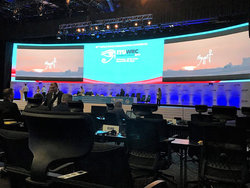 IARU Secretary David Sumner, K1ZZ, reported on the ITU Radiocommunication Assembly (RA) that took place in Sharm el-Sheikh just ahead of WRC-19.
IARU Secretary David Sumner, K1ZZ, reported on the ITU Radiocommunication Assembly (RA) that took place in Sharm el-Sheikh just ahead of WRC-19..JPG) chair the US House Energy and Commerce Committee in the 115th Congress, and has served as the panel's ranking member since the Democratic Party gained control of the House.
chair the US House Energy and Commerce Committee in the 115th Congress, and has served as the panel's ranking member since the Democratic Party gained control of the House.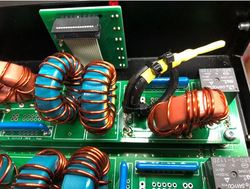
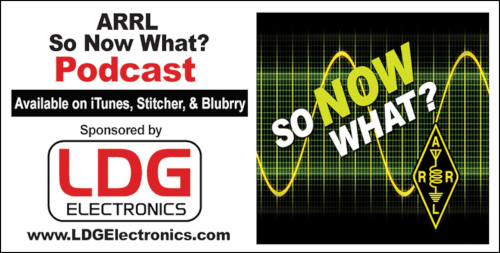 If you're a newly licensed amateur radio operator, chances are you have lots of questions. This biweekly podcast has answers! So Now What? offers insights from those who've been just where you are now. New episodes will be posted every other Thursday, alternating new-episode weeks with the
If you're a newly licensed amateur radio operator, chances are you have lots of questions. This biweekly podcast has answers! So Now What? offers insights from those who've been just where you are now. New episodes will be posted every other Thursday, alternating new-episode weeks with the 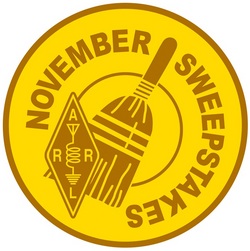 want to dabble. Others enjoy trying to make a clean sweep by working one station in each section. Most SS operators, though, simply try to run up the contact and multiplier counts, staying in the chair for the full 24 (out of 30) allowable hours.
want to dabble. Others enjoy trying to make a clean sweep by working one station in each section. Most SS operators, though, simply try to run up the contact and multiplier counts, staying in the chair for the full 24 (out of 30) allowable hours.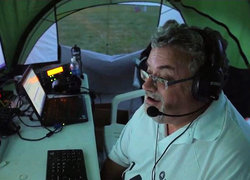
.jpg)
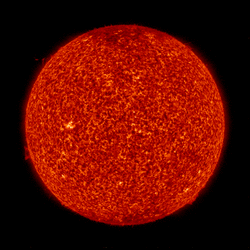 On Friday and Saturday, a coronal hole let loose a solar wind stream, causing geomagnetic instability, and the average daily planetary A index rose from 4.7 to 16.4.
On Friday and Saturday, a coronal hole let loose a solar wind stream, causing geomagnetic instability, and the average daily planetary A index rose from 4.7 to 16.4..jpg) forward," Bankston said at the conclusion of the 2019 AMSAT Symposium and Annual General Meeting over the weekend. He said the improvements will modernize how AMSAT serves its members and that the new membership management system will give members control over their membership accounts, allowing them to update contact information, pay dues, and register for events. He did not indicate when the updated website would be up and running.
forward," Bankston said at the conclusion of the 2019 AMSAT Symposium and Annual General Meeting over the weekend. He said the improvements will modernize how AMSAT serves its members and that the new membership management system will give members control over their membership accounts, allowing them to update contact information, pay dues, and register for events. He did not indicate when the updated website would be up and running.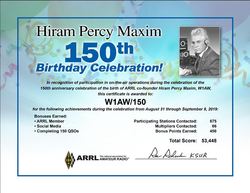 Results and certificates from the
Results and certificates from the .jpg) The ARRL Foundation has announced for additional recipients of scholarships that it manages. The Albemarle Scholarship was awarded to Dalton Southerland, W1DGS, of Louisburg, North Carolina; the Atlanta Radio Club Scholarship was awarded to Emily Wilbourn, KM4JXB, of Buford, Georgia; the Cordel Scholarship was awarded to Collin Pike, KJ4AXB, of Roanoke, Alabama, and the Winscot Scholarship was awarded to Anna Grogen Pike, KD4PCU, of Roanoke, Alabama.
The ARRL Foundation has announced for additional recipients of scholarships that it manages. The Albemarle Scholarship was awarded to Dalton Southerland, W1DGS, of Louisburg, North Carolina; the Atlanta Radio Club Scholarship was awarded to Emily Wilbourn, KM4JXB, of Buford, Georgia; the Cordel Scholarship was awarded to Collin Pike, KJ4AXB, of Roanoke, Alabama, and the Winscot Scholarship was awarded to Anna Grogen Pike, KD4PCU, of Roanoke, Alabama.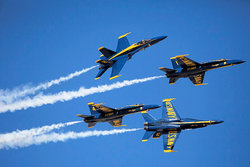 More than 50 Amateur Radio Emergency Service (ARES®) and Auxiliary Communication Service (ACS) volunteers supported the
More than 50 Amateur Radio Emergency Service (ARES®) and Auxiliary Communication Service (ACS) volunteers supported the 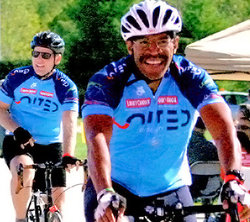 Louisiana and Mississippi amateur radio volunteers supported the "Bike MS: Dat's How We Roll" Event. Over the October 5 - 6 weekend, 32 amateur radio volunteers from the Southeast Louisiana Amateur Radio Club (SELARC), the Southwest Mississippi Amateur Radio Club (SMARC), and Southeast Louisiana ARES supported the "Bike MS: Dat's How We Roll" event. The tour provided 267 volunteer hours in support of the annual multiple sclerosis bike ride from Hammond, Louisiana, to Percy Quin Park, Mississippi, and back. The hams used the SELARC VHF repeater and the LWARN UHF repeater system to provide communication for safety, logistics, and medical teams along the route on the back-country roads of Louisiana and Mississippi. Event sponsors, staffers, and friends and families of the cyclists as well as the cyclists themselves expressed their appreciation for the work of the ham radio volunteers and were impressed with the capabilities of amateur radio, Communications Coordinator Bob Priez, WB5FBS, said.
Louisiana and Mississippi amateur radio volunteers supported the "Bike MS: Dat's How We Roll" Event. Over the October 5 - 6 weekend, 32 amateur radio volunteers from the Southeast Louisiana Amateur Radio Club (SELARC), the Southwest Mississippi Amateur Radio Club (SMARC), and Southeast Louisiana ARES supported the "Bike MS: Dat's How We Roll" event. The tour provided 267 volunteer hours in support of the annual multiple sclerosis bike ride from Hammond, Louisiana, to Percy Quin Park, Mississippi, and back. The hams used the SELARC VHF repeater and the LWARN UHF repeater system to provide communication for safety, logistics, and medical teams along the route on the back-country roads of Louisiana and Mississippi. Event sponsors, staffers, and friends and families of the cyclists as well as the cyclists themselves expressed their appreciation for the work of the ham radio volunteers and were impressed with the capabilities of amateur radio, Communications Coordinator Bob Priez, WB5FBS, said.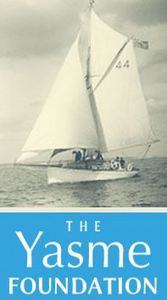 The Yasme Foundation
The Yasme Foundation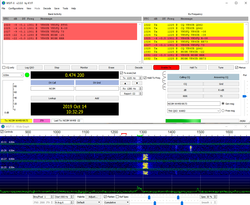 Eric Tichansky, NO3M, and Roger Crofts, VK4YB, are claiming a new world distance record on 630 meters. They worked each other on October 14 at 1032 UTC using JT9 mode. Tichansky said the contact represented the culmination of 2 years of effort around every equinox since September 2017. "Hopes were wearing thin as we were moving away from the recent equinox on September 23," he said. "Even when the path may have been open over the past 3 weeks, either end would be plagued with QRN." He said that while the opening that facilitated the record-breaking contact was not comparably as strong as past openings, "something special was obviously at play." The contact covered 9,307.5 miles (14,979 kilometers), topping the previous record of 8,351.9 miles set by Roger Crofts, VK4YB, and Kenneth Roberson, K5DNL, by nearly 1,000 miles. Tichansky said his transmit antenna is a 67-foot top-loaded vertical, and the receive antenna is a full-sized eight-circle array comprised of short verticals. The transmit/receive at VK4YB is a linear-loaded vertical. -- Thanks to Eric Tichansky, NO3M
Eric Tichansky, NO3M, and Roger Crofts, VK4YB, are claiming a new world distance record on 630 meters. They worked each other on October 14 at 1032 UTC using JT9 mode. Tichansky said the contact represented the culmination of 2 years of effort around every equinox since September 2017. "Hopes were wearing thin as we were moving away from the recent equinox on September 23," he said. "Even when the path may have been open over the past 3 weeks, either end would be plagued with QRN." He said that while the opening that facilitated the record-breaking contact was not comparably as strong as past openings, "something special was obviously at play." The contact covered 9,307.5 miles (14,979 kilometers), topping the previous record of 8,351.9 miles set by Roger Crofts, VK4YB, and Kenneth Roberson, K5DNL, by nearly 1,000 miles. Tichansky said his transmit antenna is a 67-foot top-loaded vertical, and the receive antenna is a full-sized eight-circle array comprised of short verticals. The transmit/receive at VK4YB is a linear-loaded vertical. -- Thanks to Eric Tichansky, NO3M







